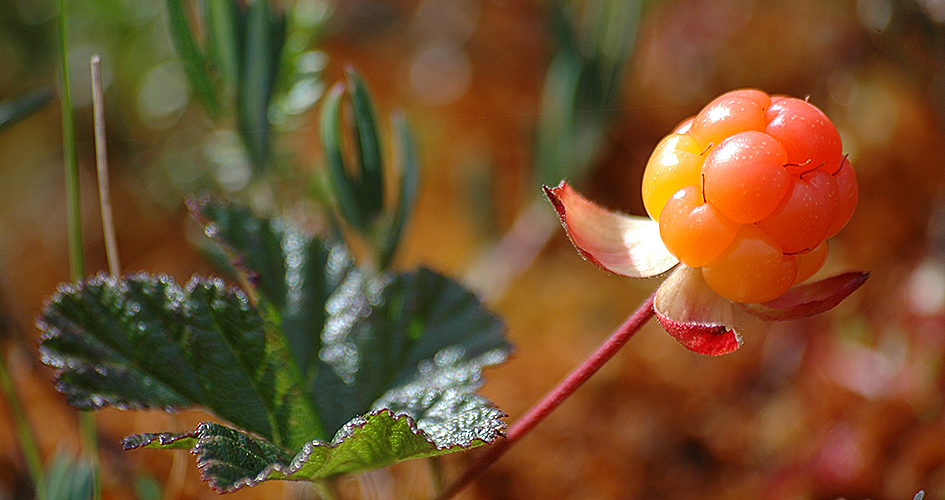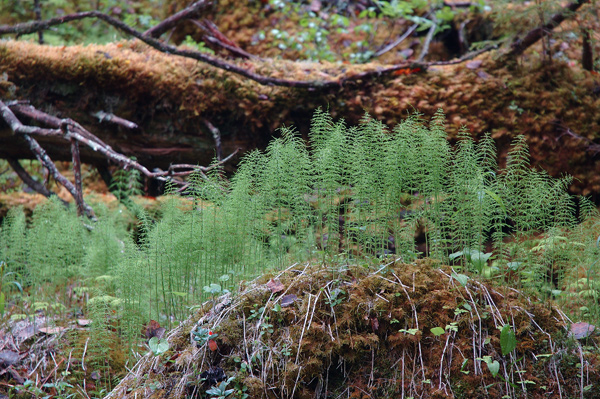 Foto: Andreas Garpebring
Foto: Andreas GarpebringPlant life
The curious amongst you will find many exciting mushrooms, lichens, mosses and tracheophytes in Björnlandet national park. Allow this area to entice you onto a quest of botanical discoveries – feel free to take a look at the inventory we have compiled.

Unusual fungi
133 species of fungi have been recorded in Björnlandet national park. Most of these are bracket fungi that inhabit trees. 39 of these species are considered threatened, and many of them are indicative of the forest’s high natural value. Some of these fungi include the bitter tooth mushroom – primarily found in oldersandy pine forests – and the aniseed polypore fungus on old sallow.
Lichen-covered rocks and trees
195 species of lichen have been identified in the park, of which 31 are on the IUCN Red List. Old tree trunks, charred tree remains, sallow and rocks provide habitats for lichens. Lungwort lichen survives on sallow, reindeer lichen on rocks, and the tiny clam lichen on wood that has been burnt.
Taiga’s tracheophytes
Large areas of the park are home to vascular plants typical for older pine and spruce forests. Lingonberry shrubs, twinflowers and bilberry shrubs are common. In more lush areas, you can find the alpine sow-thistle. Along the brooks you might even see the ostrich fern or bird cherry. The Lapland buttercup is the most famous plant in Björnlandet national park. It is rare, but can be found in undisturbed coniferous swamps throughout the park. The marshes are home to fragrant wild rosemary and beautiful marsh lousewort.
Share with your friends
Share this page with your friends on Facebook, X (formerly Twitter), Google+ and e-mail.







